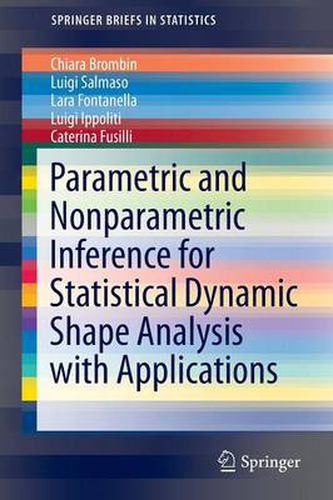Readings Newsletter
Become a Readings Member to make your shopping experience even easier.
Sign in or sign up for free!
You’re not far away from qualifying for FREE standard shipping within Australia
You’ve qualified for FREE standard shipping within Australia
The cart is loading…






This title is printed to order. This book may have been self-published. If so, we cannot guarantee the quality of the content. In the main most books will have gone through the editing process however some may not. We therefore suggest that you be aware of this before ordering this book. If in doubt check either the author or publisher’s details as we are unable to accept any returns unless they are faulty. Please contact us if you have any questions.
This book considers specific inferential issues arising from the analysis of dynamic shapes with the attempt to solve the problems at hand using probability models and nonparametric tests. The models are simple to understand and interpret and provide a useful tool to describe the global dynamics of the landmark configurations. However, because of the non-Euclidean nature of shape spaces, distributions in shape spaces are not straightforward to obtain.
The book explores the use of the Gaussian distribution in the configuration space, with similarity transformations integrated out. Specifically, it works with the offset-normal shape distribution as a probability model for statistical inference on a sample of a temporal sequence of landmark configurations. This enables inference for Gaussian processes from configurations onto the shape space.
The book is divided in two parts, with the first three chapters covering material on the offset-normal shape distribution, and the remaining chapters covering the theory of NonParametric Combination (NPC) tests. The chapters offer a collection of applications which are bound together by the theme of this book.
They refer to the analysis of data from the FG-NET (Face and Gesture Recognition Research Network) database with facial expressions. For these data, it may be desirable to provide a description of the dynamics of the expressions, or testing whether there is a difference between the dynamics of two facial expressions or testing which of the landmarks are more informative in explaining the pattern of an expression.
$9.00 standard shipping within Australia
FREE standard shipping within Australia for orders over $100.00
Express & International shipping calculated at checkout
This title is printed to order. This book may have been self-published. If so, we cannot guarantee the quality of the content. In the main most books will have gone through the editing process however some may not. We therefore suggest that you be aware of this before ordering this book. If in doubt check either the author or publisher’s details as we are unable to accept any returns unless they are faulty. Please contact us if you have any questions.
This book considers specific inferential issues arising from the analysis of dynamic shapes with the attempt to solve the problems at hand using probability models and nonparametric tests. The models are simple to understand and interpret and provide a useful tool to describe the global dynamics of the landmark configurations. However, because of the non-Euclidean nature of shape spaces, distributions in shape spaces are not straightforward to obtain.
The book explores the use of the Gaussian distribution in the configuration space, with similarity transformations integrated out. Specifically, it works with the offset-normal shape distribution as a probability model for statistical inference on a sample of a temporal sequence of landmark configurations. This enables inference for Gaussian processes from configurations onto the shape space.
The book is divided in two parts, with the first three chapters covering material on the offset-normal shape distribution, and the remaining chapters covering the theory of NonParametric Combination (NPC) tests. The chapters offer a collection of applications which are bound together by the theme of this book.
They refer to the analysis of data from the FG-NET (Face and Gesture Recognition Research Network) database with facial expressions. For these data, it may be desirable to provide a description of the dynamics of the expressions, or testing whether there is a difference between the dynamics of two facial expressions or testing which of the landmarks are more informative in explaining the pattern of an expression.